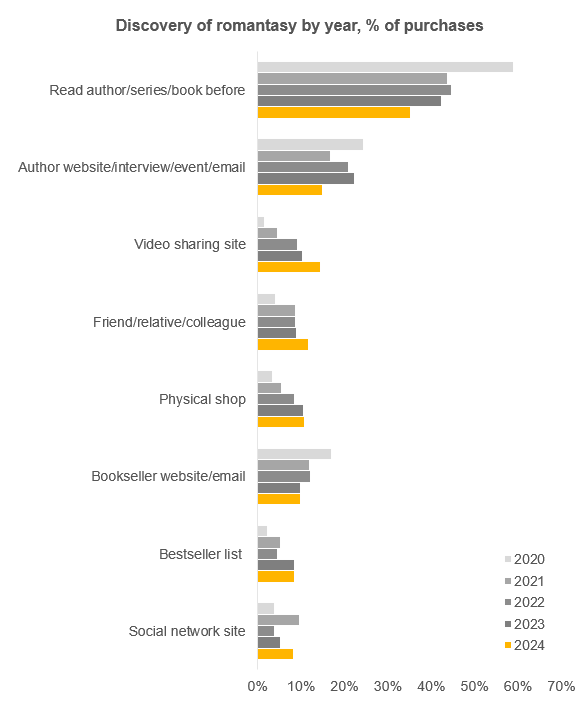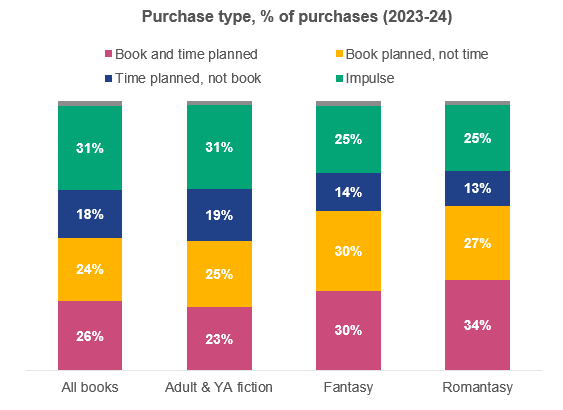If you’ve visited a bookshop recently, or gone on a book-focused website, or read anything about the book world, chances are you’ve come across the buzzword of the moment: ROMANTASY. The blend of fantasy and romance has brought an expanded, passionate audience to the science fiction & fantasy shelves, driving sales to the highest they’ve ever been, led by the stars of the genre Sarah J. Maas and Rebecca Yarros. In early 2025, Yarros’ latest Onyx Storm saw the highest opening week of a hardback fiction title in the UK since Harper Lee’s Go Set a Watchman in 2015, and as of the end of July, she claims three spots within the top ten print books for the year so far, with Maas also featuring thanks to A Court of Thorns and Roses. (You can see the massive first week for Onyx Storm and how the overall top 20 titles have changed throughout the year here.)

Alongside these two dominant names, many other authors, often debuts, have been staking their claim in the charts, ensuring readers have no shortage of imaginary (or real) worlds to escape into, featuring whatever combination of magical being and romance trope their heart desires. But when consumers are often driven to buy books based on previous knowledge/readership of the author or series, especially when it comes to fiction, how do you grow a genre beyond the big names?
Fortunately for romantasy, we have our other favourite buzzword, TikTok! According to our monthly Books & Consumers survey, in 2024, nearly 15% of romantasy purchases were discovered via video sharing sites, up from 10% the previous year and just 5% back in 2021, shown in the graph below. Video sharing sites still sit behind previously reading the author/series and author media/communications, but both of those have dropped over the last five years. And it’s not just recommendations coming from TikTok, as we’ve also seen an increase for recommendations from friends/family, so the word of mouth, whether delivered personally or via videos, is apparent and important.

Discovery through physical shops and bestseller lists has also grown, as these books gain more visibility in the market and success begets success. Despite that growing shop discovery, one thing that sets the genre apart from wider fiction is the intent when shopping – a third of romantasy purchases in 2023-24 were entirely planned for that book at that time, compared to less than a quarter of adult and YA fiction, shown below. If we also include those purchases where the buyer knew what book they wanted but hadn’t planned a specific time, the share goes above 60%. In other words, romantasy readers often know what they want when going into the shop, similar to what we see for wider fantasy. Only a quarter of purchases in the last two years were entirely impulsive, but with physical shop discovery growing, we may see an increase in impulse/browsing purchases, which certainly helps to expand the audience further. We’re watching the evolution of a trend in real time, as the genre goes from a smaller subset of pre-existing fans to a wider enthusiastic community and then spilling into the overall consumer base who want to know what all the fuss is about!

For more about the romantasy consumer, our new report The UK Romantasy Book Consumer 2024 delves into buyer demographics, media & leisure activities, book & reading related behaviours, sources of purchase, discovery and purchase influences. For more information and to purchase, email infobookresearch@nielseniq.com.
Data extracted from the NielsenIQ BookData Books & Consumers survey, to December 2024.
